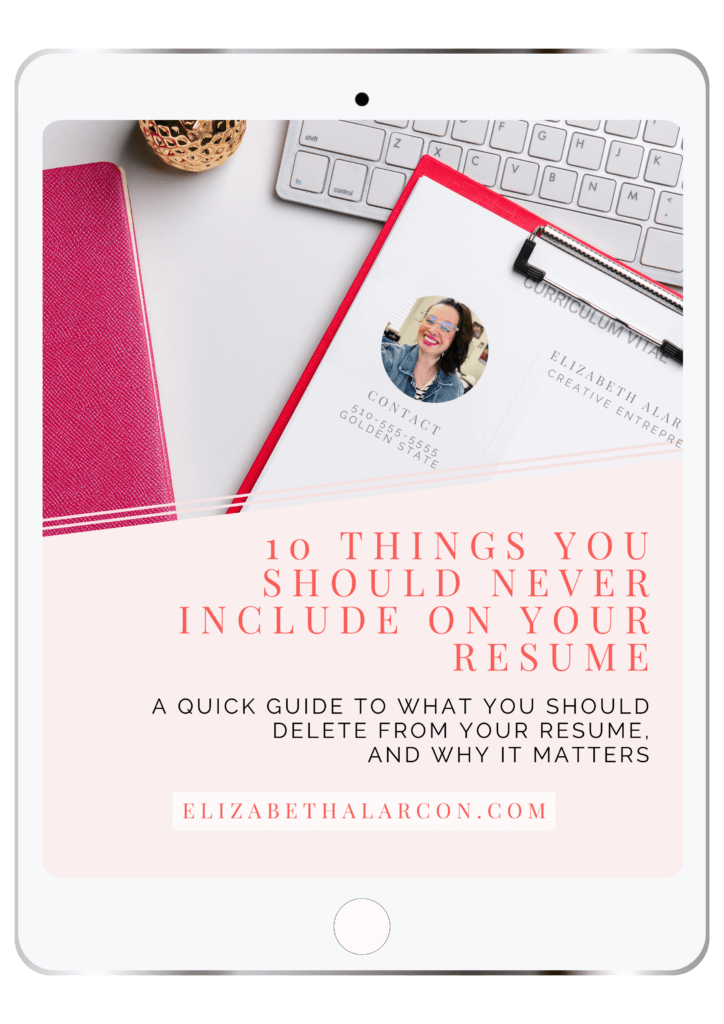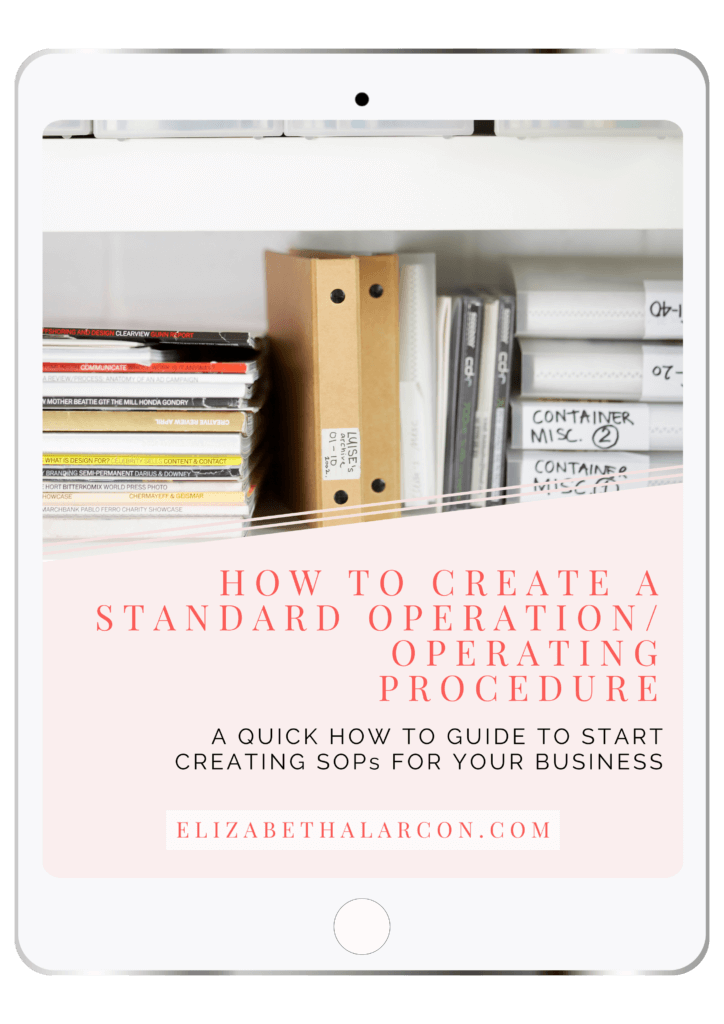Unleashing the Power of Digital Minimalism in Your Business: Transforming Operational Efficiency Through Simplified and Purposeful Digital Strategies
As an entrepreneur, freelancer, or small business owner, you probably have a smartphone, laptop, and other digital tools that help you manage your business. Living in this fast-paced digital world, avoiding the constant notifications, emails, and messages that pull us away from work can be challenging. However, a cluttered and distracted workspace can impact our productivity and creativity, so it’s essential to consider the principles of digital minimalism.
Digital minimalism is the art of lessening the burden of digital distractions and focusing only on the essential aspects of technology. Digital minimalism can significantly reduce distractions and increase productivity in today's business world. In this blog post, I will explore how you can use digital minimalism practices in your business.
Before I jump in, I am in no way, shape, or form advocating that you eliminate all your tools, especially those essential to running your business. I suggest you take a hard look at what you've got and ask yourself if these tools are helpful and necessary or distract you from your business goals.
The word minimalism can conjure up feelings of restriction or give the impression that you must go without. This isn’t necessarily the case. When it comes to digital (or analog) minimalism; instead, it is about embracing the power of technology and using it in a purposeful way to increase efficiency and enhance your workflow.
In the last blog post, I discussed my journey toward balance and how digital minimalism helped me. And while my journey isn't over or perfect, it is a constant reminder to check in with myself and evaluate if I'm using the digital tools in my life to their fullest potential or just for distraction's sake.

The Impact of Digital Overload
The prevalence of digital tools in business
Digital tools are undoubtedly ubiquitous in the current business landscape. Companies harness technologies to automate processes, enhance communication, and drive strategic decision-making regardless of scale. These range from simple applications for tasks, project management, or communication to more complex software for data analysis, customer relationship management, or resource planning.
However, this ubiquity can also lead to a state of ‘digital overload.' This occurs when the volume or complexity of digital information and interactions surpasses our cognitive capabilities, resulting in stress, decreased productivity, and the potential for burnout. In a business context, digital overload can manifest in various ways, such as struggling to manage an overflowing email inbox or feeling overwhelmed by the sheer number of tools and software you're expected to use.
Despite these challenges, it’s important to remember that technology is not the issue. Instead, the problem lies in how we use it. This is where the principles of digital minimalism can come into play. By consciously deciding what digital tools you need and discarding the rest, you can mitigate the effects of digital overload.
This simplified and purposeful approach to technology empowers businesses to focus on their core objectives, fosters a healthier work environment, and ultimately enhances operational efficiency.
Why don't programmers like to go outside?
Because they get too caught up automating the door, they never make it out of the house!
*boom boom pssh!*
Ok I will see my way out.
The impacts of constant notifications and messages on productivity and creativity
The incessant arrival of notifications and messages can significantly disrupt workflow and productivity. Each interruption pulls your attention away from the task at hand, and upon return, it can take several minutes to regain the same level of focus and immersion. This constant shift of attention between tasks, known as ‘context switching,' can be particularly detrimental to productivity. Even minor digital interruptions can cumulatively lead to significant lost time and productivity.
Moreover, a consistently distracted work environment can also stifle creativity. Creative thinking often requires periods of uninterrupted focus, allowing the mind to explore different perspectives and generate innovative solutions. However, constant notifications can prevent us from entering this deep concentration. The result is a workplace that's always reactive and seldom has the mental space to be truly creative and innovative.
However, by implementing digital minimalism principles, you can mitigate these impacts. You can regain control over their attention by reducing distractions and focusing on essential digital tools, improving productivity and creativity. By actively choosing when and how to engage with digital tools, we can harness their benefits while minimizing their downsides. The result is a work environment that is healthier, more focused, and more conducive to creativity and innovation.
Just a quick note. Interruptions are going to happen. There's no way around that. It's how we bounce back from them that can make the difference. So, take a break if you need one, and don't be afraid to take time to regain focus and energy. Popcorn and mini yoga breaks are a must for me. That kind of self-care is just as important as digital minimalism.
Strategies for Leveraging Digital Minimalism in Business
Identify Your Digital Tools and Systems
The first step toward digital minimalism is identifying your tools and systems. Inventory all the digital applications, programs, and software your business utilizes. Then ask yourself:
- Do I need all of these?
- Is there anything I can do without?
It's essential, to be honest and realistic in your assessment to help you determine which tools are necessary and which can be eliminated.
Focus on Essential Tools (and Systems)
Once you have identified the essential digital tools, it's time to optimize their usage. Ask yourself how you can better use them or streamline processes using automation.
- Can these essential tools be integrated to automate redundant tasks and foster more cohesive workflows?
- Are there any underutilized features or functionalities in these tools that, if fully leveraged, could improve my productivity or efficiency?
You should also consider researching other tools that may provide better value regarding features and cost.
Create Boundaries and Priorities
Creating boundaries between work and personal use of digital tools is essential. Set limits on your time using these tools during and outside work hours. You should also prioritize the most important tasks to avoid being distracted by irrelevant information.
- How can we effectively enforce these boundaries, ensuring we're not overstepping into personal time with work-related digital interactions?
- What strategies can we employ to prioritize our tasks effectively, reducing the chances of being sidetracked by less essential digital information and distractions?
This will help you focus your attention where it is most needed and prevent you from feeling overwhelmed.
Monitor Your Digital Consumption
Finally, it's important to monitor your digital consumption continuously. Set aside time each day to evaluate how you use digital tools and identify any improvement areas.
- How can we develop a routine or system to track and evaluate our digital consumption consistently?
- What metrics or signs should we look for to identify potential areas of digital overuse and overwhelm, and what steps can we take toward rectifying it?
This will help you focus on essential tasks without getting trapped in the digital hamster wheel.

Embracing the “Going Somewhat Analog” Approach: A Productive and Refreshing Strategy for the Digital Age
The Benefits of Analog Tasks in a Digital Business
While digital tools have unquestionably revolutionized business operations, a compelling case exists for incorporating analog tasks. Shifting some aspects of your work to analog mediums can provide a much-needed respite from the screens and notifications we're accustomed to.
Firstly, analog tools like handwritten notes and physical planners can enhance focus. The tangible act of writing can imbue a deeper connection with the task at hand, drawing your attention to it. This is particularly beneficial when brainstorming or planning, as lacking digital distractions allows for unencumbered creative thinking.
Secondly, the use of analog tools can contribute to better mental well-being. Continuous exposure to digital screens can cause fatigue and stress and even disrupt sleep patterns. By incorporating analog tasks into your daily routine, you can mitigate these effects, leading to a healthier, more balanced lifestyle.
Analog tasks also foster a sense of simplicity and authenticity that digital tools often fail to capture. This return to basics can provide a refreshing contrast in our tech-saturated world, stimulating a renewed appreciation for the tasks.
Lastly, reliance on digital tools can sometimes create unnecessary complexity in business operations. Software glitches, compatibility issues, and internet connectivity problems can all create friction and delays. In contrast, analog tasks are immune to such technological disruptions, providing a reliable and consistent means of getting things done.
While the digital revolution has brought undeniable benefits, it's essential to remember that technology isn't always the answer (yes, this comes from a techie fangirl!). Balancing digital and analog approaches in your business can maximize productivity, foster creativity, and promote well-being among your team. It's all about finding the right blend of old and new, simple and complex, digital and analog.

Examples of Tasks Better Suited for Analog Execution
Specific tasks perform exceptionally well when executed in an analog format. Brainstorming sessions are a classic example where sticking to whiteboards and sticky notes can lead to more creative, divergent thinking. The spatial nature of these tools allows for the synthesis of ideas in a manner that digital tools can't replicate.
Another task that often benefits from an analog approach is planning and scheduling. While digital calendars can provide reminders and sync across devices, the tactile experience of writing in a physical planner can help reinforce your memory of events and deadlines, making you less reliant on digital reminders.
Moreover, in situations requiring deep focus and clear thinking, such as strategic decision-making or complex problem-solving, going analog can help. The constant barrage of notifications and the tendency to multitask when using digital devices can disrupt your concentration. Removing these distractions by switching off the digital world can foster a more conducive environment for critical thinking.
Lastly, personal communication can sometimes be better serviced with analog methods. A handwritten thank you note or a face-to-face conversation can create a more profound, authentic connection than digital communications, which often lack human interaction's personal touch and warmth.
While technology undoubtedly enhances operational efficiency and convenience, it's essential to recognize that it's not a cure-all for all business tasks. Digital tools can sometimes introduce more issues than they solve, ranging from software bugs to information overload, leading to stress and inefficiency.
It's about striking a balance and understanding that sometimes, the best solution might not be the most technologically advanced one. It's about recognizing that simplicity and human touch – characteristics often embodied by analog tasks – remain valuable in our digital age.
Start with Brainstorming
Begin your projects or tasks with an analog brainstorming session. Use a physical whiteboard or Post-Its to jot down and organize your ideas. This tactile process can stimulate creativity, allowing for a broader exploration of concepts and strategies. Unlike digital platforms, this method lets you view all your ideas simultaneously, fostering connections that may be overlooked.
I've tried to use mind mapping software, and right now, I'm forcing myself to use digital whiteboards and notetaking apps; honestly, I find them a bit cumbersome. I spend more time looking for things, getting the file to save, or sometimes open because it's laggy. This defeats the purpose of an app being efficient just because I can access it on my phone.
Choose the path of least resistance and focus on what will effectively accomplish the task.
Plan Your Projects
Once I've identified my project goals, I use an analog planner to create a timeline and plan the tasks needed. This physical act of writing helps me internalize the plan better. It's how my brain is wired, I guess. I'm able to make adjustments if something isn't working efficiently. Essentially, it creates controlled chaos before approving the subsequent phase. This method has been a lifesaver for me, preventing me from being overwhelmed by the sheer volume of work that needs to be accomplished. This rigorous selection process only allows the best ideas to move to the next phase.
The tactile nature of having a physical document can help reinforce your memory of events and activities.
Moreover, analog planners are immune to software malfunctions or server outages, making it a reliable and consistent tool for planning. Each day I open my physical planner, the plan is still there and ready to be worked on.
While on software malfunctions and outages, this happened to me earlier this year while working on a project. I let the “Oh, you do it old school,” snarky remarks slide and went into problem-solving mode. It was my curated and colorful handwritten notes that ultimately saved the day.
You're welcome.
Transition into Digital Projects
Once your thoughts are thoroughly organized and refined on your whiteboard or post-its, transfer them to your digital task manager or content calendar. This transition from analog to digital bridges the gap between initial conceptualization and execution. Inputting your ideas into a digital platform allows easy sharing, collaboration, and adjustment. It also makes a great checkpoint. The shift in mediums from analog to digital will help keep your attention on the task, preventing any sidetracking that usually occurs when one is stuck in the same environment.
Leverage Technology to Supplement Analog Tasks
Analog and digital tools don't have to compete; they can complement each other. I'm here to remind you that It's possible to use technology to supplement analog tasks and facilitate collaboration. For instance, I take photos of my whiteboard sketches and notes and upload them into the cloud for easy access. This allows me to share and update ideas quickly without huddling around a single board. Additionally, you can leverage task management tools to assign tasks and track progress throughout the project. I use this method for larger projects or initiatives that require multiple steps and careful coordination.
- Digitize Handwritten Notes: Use apps like Evernote or OneNote to snap pictures of your handwritten notes, making them searchable and accessible from any device. This keeps your notes organized and ensures they are always within reach.
- Speech-to-Text Tools: When you're on the go and can't jot down your thoughts, use speech-to-text apps like Krisp.AI or Otter.AI. This way, you can record your ideas instantly without needing a pen and paper.
- AI-Based Sorting: Use AI-based apps to sort and categorize your handwritten notes based on content. This can save you time and effort in managing your notes.
- Digital Time Trackers: While you may have your project timeline in your analog planner, a digital time tracker can help you track how much time you spend on each task. This could aid in better time management and productivity.
- Automated Processes: Use process automation software to streamline tedious tasks like data entry or reporting, freeing your time for more creative activities.
By fusing analog and digital methods, I have created a dynamic workflow that optimizes efficiency while minimizing stress levels.
Evaluate and Adjust
Remember, this hybrid approach aims to enhance productivity and well-being. Continuously evaluate the effectiveness of your workflow and make necessary adjustments. What works for one person or task might not work for others.
The fusion of analog and digital in your business workflow is all about leveraging both strengths to create a balanced, efficient, and mentally rewarding work environment. It's about preserving the human touch in the digital age and fostering a sense of simplicity and authenticity amidst the complexities of modern tech.
Conclusion
I'll say it once again. Digital Minimalism is not about shunning technology but the thoughtful utilization of digital and analog tools to enhance productivity and mindfulness. It's a journey towards creating a perfectly harmonized work environment that respects our human need for tangible interaction while leveraging the benefits of digital advancements. Implementing this hybrid approach empowers you to regain control over your workflow, reduce digital clutter, and achieve more with less stress. So, embark on your journey to Digital Minimalism and experience the transformative power of simplicity and purpose in your business today.
THIS SITE USES AFFILIATE LINKS. THERE’S NO EXTRA COST TO YOU, BUT I RECEIVE A SMALL COMMISSION WHEN YOU USE THEM.
PIN ME!












💁🏻♀️ Community Guidelines
To ensure a positive and respectful environment for everyone, please take a moment to review our Community Guidelines. Following these guidelines helps us maintain a safe space for all.